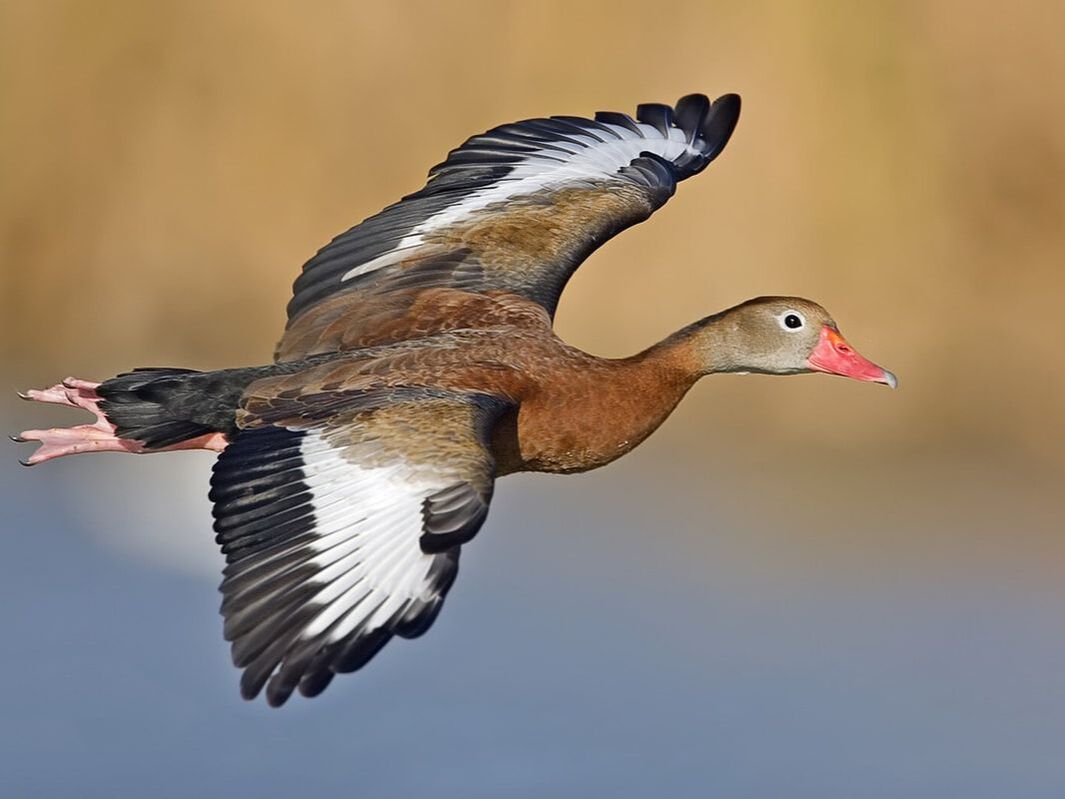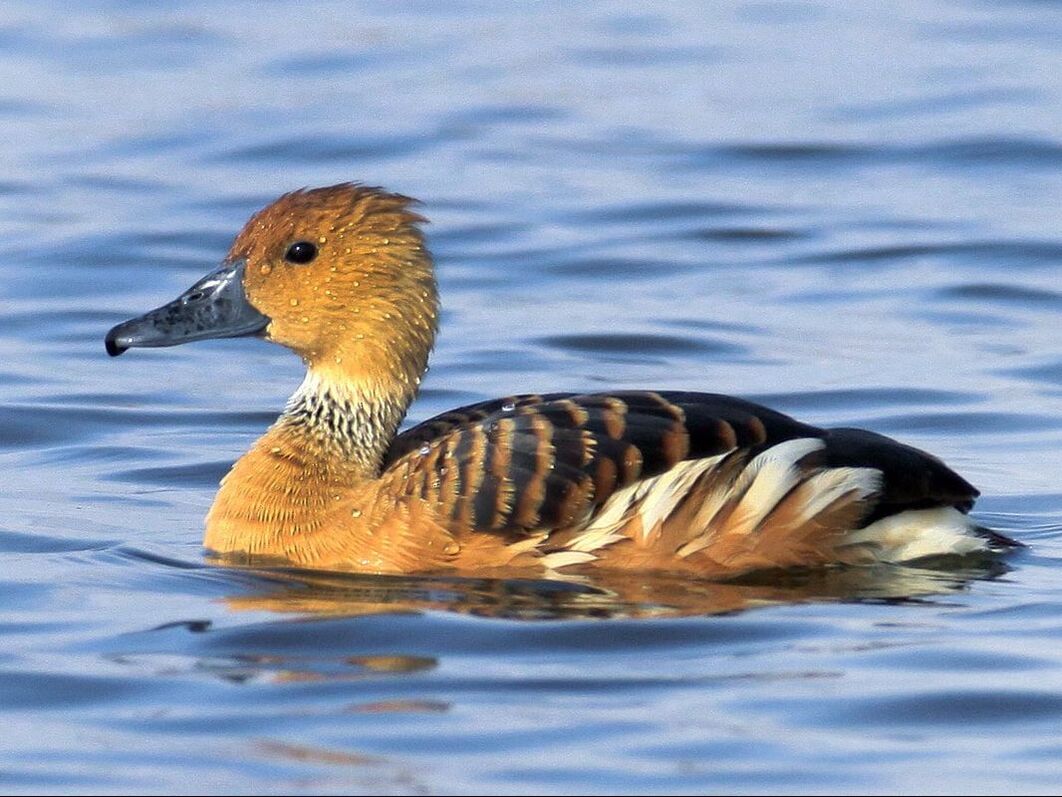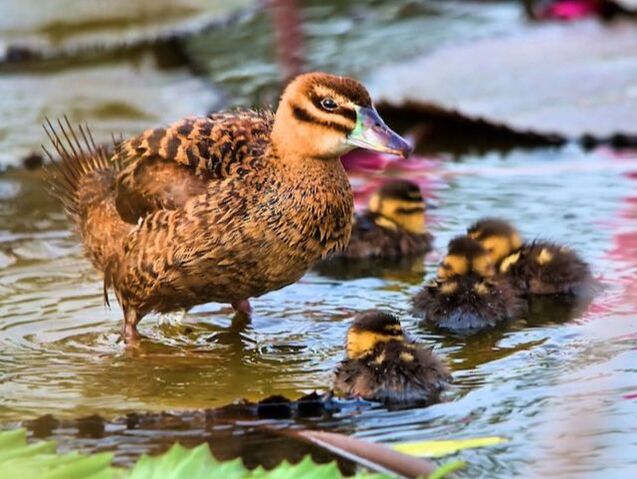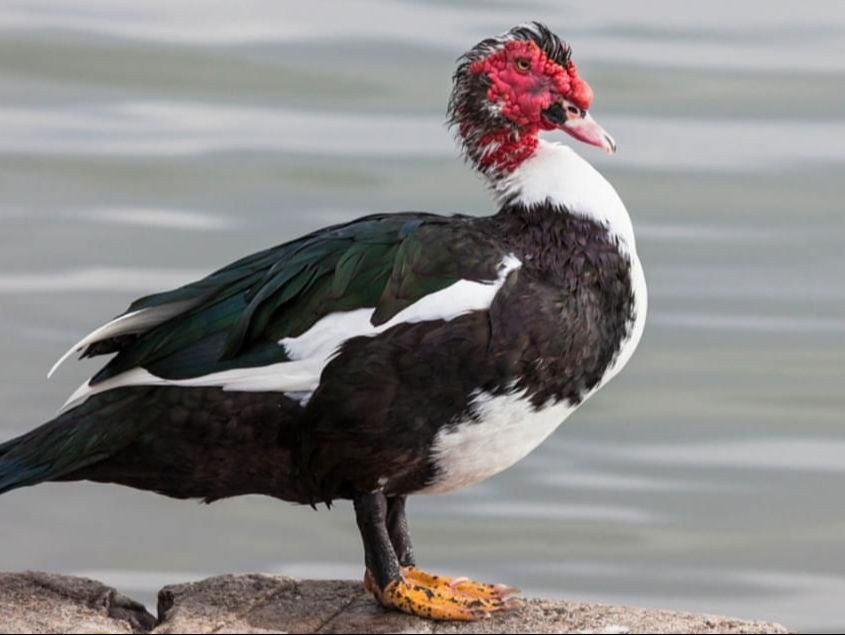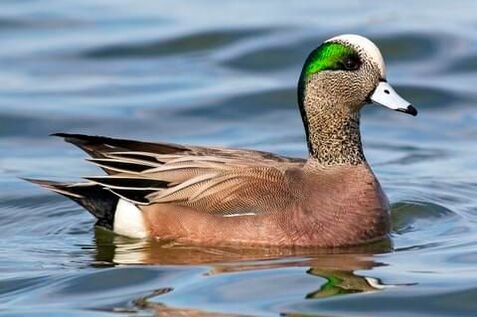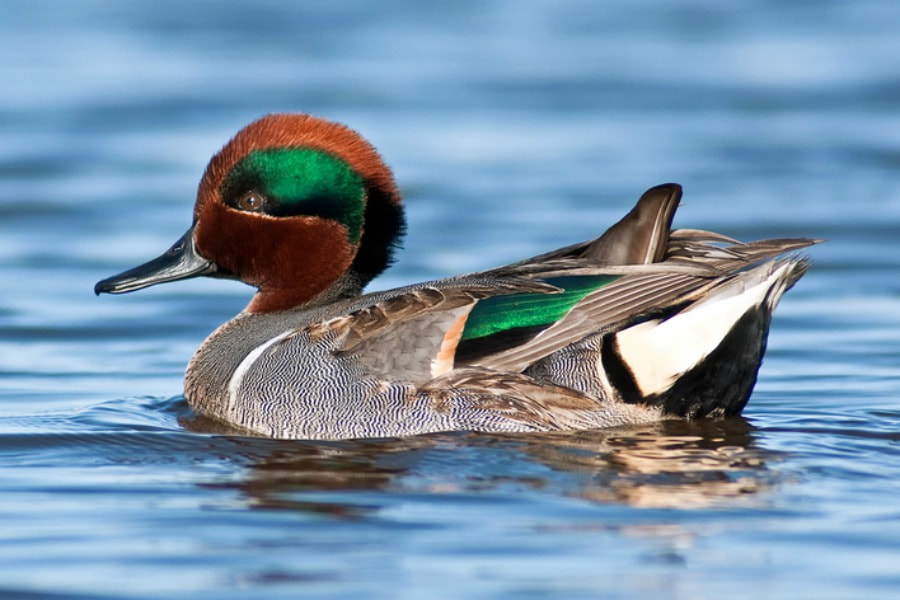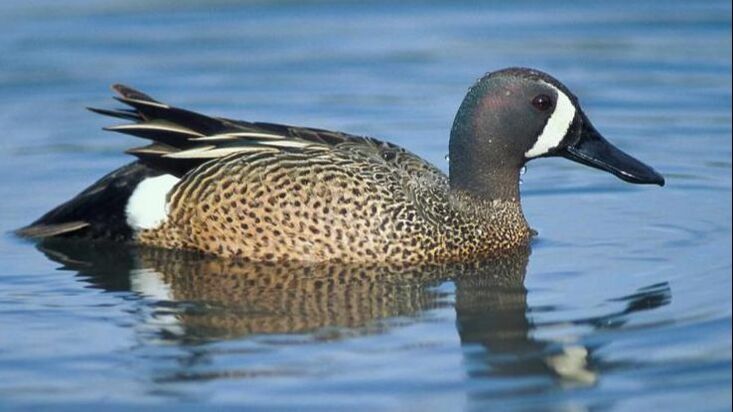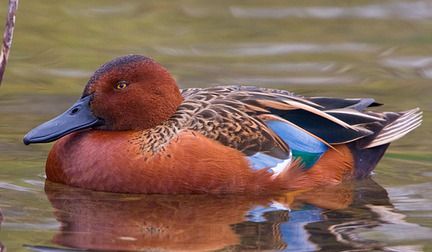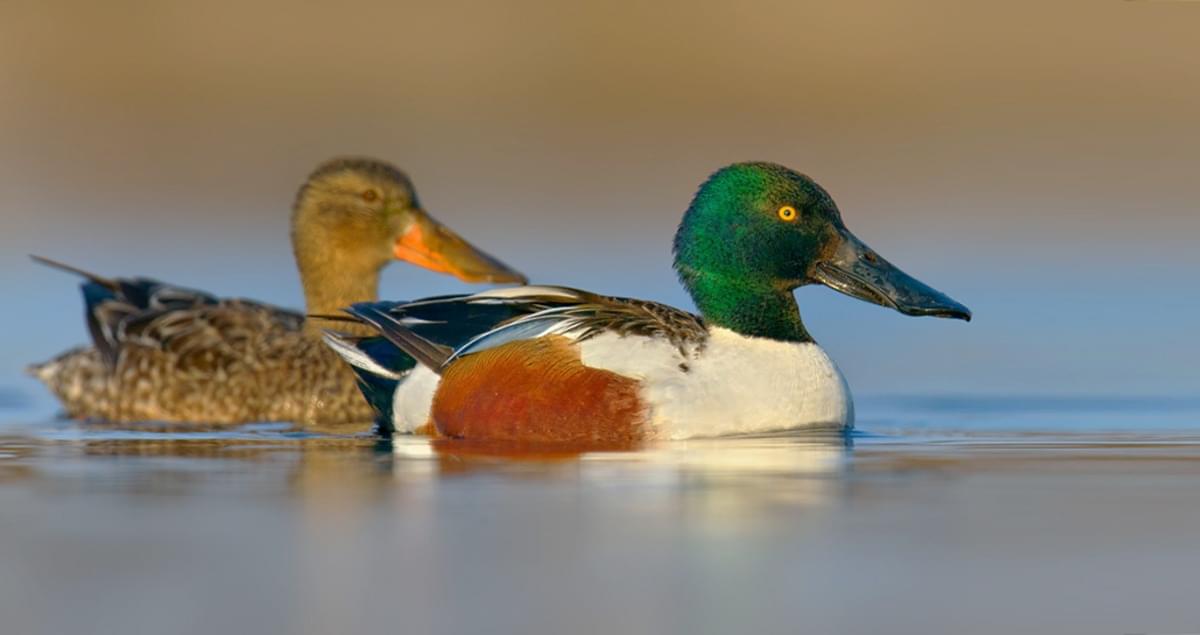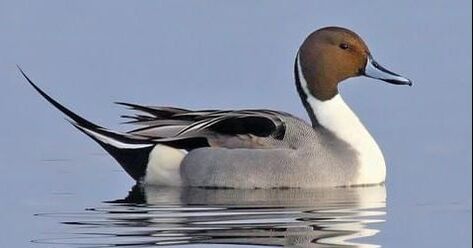Ducks - in Belize
Black-Bellied Whistling Duck
Black Bellied Whistling Duck - The Black-bellied Whistling-Duck is a boisterous duck with a brilliant pink bill and an unusual, long-legged silhouette. In places like Texas and Louisiana, watch for noisy flocks of these gaudy ducks dropping into fields to forage on seeds, or loafing on golf course ponds. Listen for them, too—these ducks really do have a whistle for their call. Common south of the U.S., Black-bellied Whistling-Ducks occur in several southern states and are expanding northward.
BELIZE HABITAT - Rice fields, coastal lagoons, other wet or ponded areas with emergent vegetation. Where can I find this bird in Belize? Common to very common late summer and autumn visitor in many areas; smaller numbers in winter through early summer. Nests principally in north, locally in south. Abundance has increased dramatically in last 35 years, with only four records prior to 1965. INTERESTING BIRD FACTS
|
Fulvous Whistling Duck
Fulvous Whistling Duck - Whistling-ducks are a distinctive group of about 8 species of brightly colored, oddly proportioned waterfowl. The Fulvous Whistling-Duck is a mix of rich caramel-brown and black, a long-legged and long-necked creature found in warm freshwater marshes across the Americas, Africa, and Asia. In the United States they are rarely found far from rice fields, which provide both food and an optimal water depth for these gangly birds to forage in. They often roost in trees and were once known as “tree ducks.”
BELIZE HABITAT - Large, marsh-lined lagoons and estuaries, rice fields. Where can I find this bird in Belize? Fairly common visitor to Crooked Tree Belize, primarily from November to May; small groups occasionally seen at Blue Creek rice fields in Orange Walk and Cox Lagoon in Belize District; one record for south Ambergris Caye. Thus far, only a non-breeding visitor, but may establish breeding population in near future. Unrecorded prior to 1986. INTERESTING BIRD FACTS
|
Masked Duck
Masked Duck - A tropical duck, periodically invading southern Texas and Florida. Smaller than the Ruddy Duck and able to take flight from the water much more easily, the Masked Duck may colonize small and temporary bodies of water. It is generally easy to overlook, as it spends much time resting within dense marsh growth, and may clamber about through marsh like a rail. When on open water, however, it can be rather tame.
BELIZE HABITAT - Marshes with mosaic of open water and dense emergent vegetation. Where can I find this bird in Belize? Winter visitor; recorded Crooked Tree Belize, Big Falls Farm in Belize/Cayo, and Cristo Rey Cayo, December to March. Because of its skulking nature and marshy haunts, it is rarely seen and may be more common than the few records indicate. INTERESTING BIRD FACTS
|
Muscovy Duck
Muscovy Duck - The strange, warty-faced Muscovy Duck causes confusion for some bird watchers, as it's very distinctive and quite commonly seen, yet does not appear in some field guides. Truly wild individuals are restricted to south Texas and points south, but domesticated versions occur in parks and farms across much of North America. Wild Muscovy Ducks are glossy black with bold white wing patches and are forest dwellers that nest in tree cavities. Their range expanded into Texas in the 1980s; feral populations also exist in Florida.
One of the oldest domesticated fowl species in the world, the Muscovy Duck was already being kept by native people in Peru and Paraguay when the early Spanish explorers arrived. The word “Muscovy” may refer to the Muscovy Company (incorporated in London in 1555), which transported these ducks to England and France. BELIZE HABITAT - Wooded margins and eddies of major river systems; wooded lagoons, swamps & marshes. Where can I find this bird in Belize? Uncommon to fairly common resident locally on mainland, except Cayo and west Orange Walk, where seldom seen; occasionally on Ambergris Caye. Formerly more common, but numbers have been reduced by hunting. INTERESTING BIRD FACTS
|
American Wigeon
American Wigeon - Quiet lakes and wetlands come alive with the breezy whistle of the American Wigeon, a dabbling duck with pizzazz. Breeding males have a green eye patch and a conspicuous white crown, earning them the nickname "baldpate." Females are brushed in warm browns with a gray-brown head and a smudge around the eye. Noisy groups congregate during fall and winter, plucking plants with their short goose like bill from wetlands and fields or nibbling plants from the water's surface. Despite being common their populations are declining.
BELIZE HABITAT - Marshes, estuaries, lagoons, rice fields, farm ponds with shallow, standing water. Where can I find this bird in Belize? Fairly common winter visitor in north, mid-October to early April. Most records are from Crooked Tree Belize and Blue Creek rice fields in Orange Walk. One record for Ambergris Caye, unrecorded south of Belize City. INTERESTING BIRD FACTS
|
Green-Winged Teal
Green Winged Teal - The little Green-winged Teal is the smallest dabbling duck in North America. The natty male has a cinnamon-colored head with a gleaming green crescent that extends from the eye to the back of the head. In flight, both sexes flash deep-green wing patches (specula). Look for them on shallow ponds and in flooded fields, and listen for the male’s decidedly non-duck like whistle. These common ducks breed along northern rivers; wintering flocks can number as many as 50,000.
BELIZE HABITAT - Marshes, lagoons, rice fields; farm ponds with shallow, standing water. Where can I find this bird in Belize? Regular winter visitor, December to March. Apparently more frequently formerly. INTERESTING BIRD FACTS
|
Blue-Winged Teal
Blue Winged Teal - Pairs and small groups of this tiny dabbling duck inhabit shallow ponds and wetlands across much of North America. Blue-winged Teal are long distance migrants, with some birds heading all the way to South America for the winter. Therefore, they take off early on spring and fall migration, leaving their breeding grounds in the United States and Canada well before other species in the fall.
BELIZE HABITAT - Most areas with shallow, standing, or slow-running water; most common in rice fields and other freshwater marshes. Where can I find this bird in Belize? Common to locally very common winter visitor, early August to mid-May. Most abundant at Crooked Tree Belize and Blue Creek rice fields in Orange Walk. INTERESTING BIRD FACTS
|
Cinnamon Teal
Cinnamon Teal - The male Cinnamon Teal shimmers with a rich ruddy plumage, made all the more incandescent by the summer sun slanting across reedy wetlands in interior western North America. Males molt this brilliant plumage soon after breeding, becoming much more similar to female and immature birds, and very similar to other teal species, especially Blue-winged Teal. Look for Cinnamon’s longer and wider bill to help tell them apart. An entirely separate population of Cinnamon Teal lives in South America.
BELIZE HABITAT - Similar to that for Blue-Winged Teal. Where can I find this bird in Belize? Winter visitor, September to April. Most records are from Nova Shrimp Farm Belize and Blue Creek rice fields in Orange Walk. INTERESTING BIRD FACTS
|
Northern Shoveler
Northern Shoveler - Perhaps the most outwardly distinctive of the dabbling ducks thanks to its large spoon-shaped bill, the Northern Shoveler busily forages head down in shallow wetlands. Its uniquely shaped bill has comblike projections along its edges, which filter out tiny crustaceans and seeds from the water. If the bill doesn’t catch your eye, the male's blocky color palette sure will, with its bright white chest, rusty sides, and green head. The female is no less interesting with a giant orange bill and mottled brown plumage.
BELIZE HABITAT - Marshes, lagoons, rice fields; farm ponds with shallow, standing water. Where can I find this bird in Belize? Uncommon and local winter visitor in north, late September to mid-April. INTERESTING BIRD FACTS
|
Northern Pintail
Northern Pintail - Elegant Northern Pintails swim through wetlands and lakes with their slender necks and long, pointed tails held high. Intricately patterned and pale-faced females join males fashioned with a signature white stripe down their chocolate-colored necks. These eager breeders head to the prairie pothole region of the Great Plains, as well as Canada, and Alaska to nest as soon as the ice breaks up. Large groups congregate in wetlands, lakes, bays, and even waddle through agricultural fields eating grains during the winter. Though still common, their populations are declining.
BELIZE HABITAT - Marshes, estuaries, lagoons; shallow, standing water in rice fields. Where can I find this bird in Belize? Very uncommon winter visitor in north half, November to early May. INTERESTING BIRD FACTS
|

